About The ProcedureAnterior Cervical Disc Replacement
An artificial cervical disc seeks to replace the movement and cushioning function of damaged cervical disc.
Anterior cervical disc replacements are done through an incision on the front of the neck. The incision length can be as short as an inch and a half but varies based on how many levels are being operated on and the size of your neck.
After making the incision Dr. Paul gently retracts the esophagus, trachea and blood vessels to gain access to the front of your spine. He then removes the disc and removes the disc, or bone. This is done in a manner to relieve pressure on the spinal cord and nerves.
Additional bone and ligament may be released to restore normal height and alignment to the disc space. This is done to improve the long term health of your spine and avoid future surgeries. The disc replacement is then inserted. A plastic surgery closure is used for the skin.
Your disc replacement is MRI compatible, but can create some artifacts on future cervical spine images. It is not known to set off metal detectors.
How long does it take Dr. Paul to perform the Cervical Disc Replacement?
Anterior Cervical Disc Replacement Patient Animation Video
Common Surgical Risks
We have attempted to define the more common risks of surgery under each of the procedures outlined. It is impossible to outline all potential poor outcomes, but we have attempted to do so in good faith. It has not been formed as legal protection for us – only to better inform you. Please read them thoroughly.
Infections are a known complication of lumbar surgery. Infection rates are more associated with smoking, poorly controlled diabetes, obesity as well as other health factors. Less invasive and shorter procedures also have lower complication rates. Infections requiring additional surgery are extremely rare in Dr. Paul’s practice.
Bleeding can be a serious complication since blood accumulation can compress the spinal cord or nerve roots. For that reason we require discontinuing blood thinners, some anti-inflammatories and all herbal medications.
Spinal Leaks are a known complication in spine surgery but typically can be managed. They occur approximately 3 to 5% of the time They can be the result of adherent bone, disc, ligament or scar tissue to the dura and the membrane surrounding your nerves or spinal cord. They are far more associated with revision surgery, severe nerve compression and advanced age. If this occurs, we typically repair the leak during your operation. You may be required to lay flat for a short period of time afterwards. Late presenting or persisting spinal leaks can require additional surgery. Spinal leaks typically do not affect long term outcomes.
How do people function Long Term after ACDR Surgery?
The average person should have reasonable functions from day to day. The exception would be people involved with significant overhead activities, such as tradespeople. People with pre-existing stiffness may still have some. Disc replacements do not replicate the natural motion of the spine. If you had neck pain prior to surgery, you may still retain some after surgery. The focus of neck surgery is on neurologic arm symptoms and spinal cord issues.

Stopping Medications Before Surgery
Because of the risk of bleeding we require you come off the following medications for at least ten days prior to surgery. You may need to get clearance from the prescribing physician to allow a pause in these medications.

Why Do I Need a Coach?
Suggestions for choosing your coach..
The First Few Days After Surgery
Incisional Care:
Be sure to keep the wound dry by changing the dressings at least once a day, more if needed. Your incision may drain for the first week or so after surgery. This is common and expected and should lessen as you get further out from surgery.
Regular dressing changes will prevent problems. A wet dressing will breakdown the healing skin and may lead to delayed healing and possibly infection. You may shower 72 hours after surgery, but you must keep the wound dry. If you cannot keep the wound dry, please take a sponge bath until your first postoperative visit to discuss. Concerning signs include foul smelling drainage and a “tomato red” wound.
How to handle post-operative pain:
Naturally, once anesthetics have worn off, pain will become increasingly evident in the areas involved in a surgical procedure. You may not have much incisional pain after surgery because there is local anesthesia injected at the time of surgery. This will wear off in the evening. We recommend you use the pain medicine prescribed or muscle relaxant to avoid the potential for getting behind your pain.
When to call our office after surgery
Reasons to call after hours:
- Increasing drainage from a surgical wound or fevers greater than 101 degrees
- Significant throat swelling (after neck surgery)
- Loss of control of bowel or bladder
- Potential need to postpone scheduled surgery for the next business day
Reasons to call during business hours:
- To make an appointment
- Discuss or obtain test results
- Medication refills
- Inquiries regarding insurance, billing, or disability paperwork
We strongly recommend implementing the use of MyDMGHealth to contact the office. Laura and our staff monitor the messages during business hours.
Common Post-Operative Concerns: Q&A
You may still experience some of your pre-operative pain or symptoms.
This is because the nerves can take a long time to heal and may still be sensitive immediately after surgery. As healing progresses and the initial inflammatory phase as surgery resolves, the nerve irritations will resolve. This may take weeks to months in certain circumstances. This is why we follow our patients up to a year after surgery.
The use of pain medicines can, and most likely will, cause constipation.
If you are prone to constipation, make sure your bowels are soft and moving regularly prior to surgery for several days. Some patients will start a clear liquid diet the day before. It is especially important that you have a bowel movement within 48 hours after surgery. Opioid medications in particular are associated with constipation, and patients should look into taking a stool softener such as docusate, and a fiber laxative such as psyllium to facilitate normal bowel movements.
Nausea and Vomiting.
If you are prone to nausea and vomiting, please let the anesthesiologist know the day of surgery. Current anesthetic practices have drastically improved these issues, but additional precautions may help. Also, Dr. Paul’s team will avoid medications that may cause nausea and vomiting for you.
Infection.
Although uncommon, wounds can become infected following any operation. Redness and warmth accompanying unusually painful incisions are suggestive of infection, as well as oozing of the incision site. Risk of deep infection within the first 2 weeks after surgery is rare. If you develop a sustained fever over 101 or if you experience malodorous drainage or the incision turns deep red and sensitive to touch please contact our office. Notify your physician immediately if any of these symptoms occur please call or message us using the MyDMG app.
2-6 Weeks After Surgery
We often talk to patients about the first two weeks being the most difficult after a cervical spine surgery. The first 2 days are the hardest in that 2-weeks. Swallowing difficulties are very common during this time period. The degree to which you may have trouble swallowing varies greatly.
Expect to use soft solids like mashed potatoes, eggs and smoothies early on. If you are coughing after drinking fluids, please call the office. Moderate neck pain is also common.The more active you are the more the muscle soreness improves. Please do not just lay in bed. Some of our patients will sleep in a recliner the first few days after surgery. This is strictly optional.
6-12 Weeks After Surgery
After the first six weeks, we typically decrease restrictions. We allow for more bending or twisting as required for normal everyday activities.
We will often raise the lifting restriction to 20 to 40 pounds. You may return to light duty or physical labor if pain-free and allowed by our team. You may swim after six weeks. Continue your physical therapy exercise program. You may be shown specific therapeutic exercises at your six-week visit.
Care & Recovery Information
The most dramatic changes will take place in the first eight weeks after surgery. Even if you experience some of your pre-op pain during this time, you should not be too concerned. We follow our patients for a year after surgery knowing the nerves may take a long time to heal. Most feel significantly better after the first week or two.
It is not uncommon to experience your post-operative pain. The nerves are still sensitive once pressure is taken off them and it may take time for them to heal.
Physical Therapy
Some of our patients may benefit from physical therapy after surgery. Kevin will likely order this for you in 2 or 6 weeks if necessary. We prefer to send you to physical therapists with specific emphasis on spine and in your immediate area.
Our “partner” physical therapists understand Dr. Paul’s protocols and surgeries. If you live outside our area, or out of state, we will work with your local therapists on a case by case basis.
Access Dr. Paul’s Curated Rehab & Physical Therapy Video Library.


Physical Therapy
Some of our patients may benefit from physical therapy after surgery. Kevin and Sienna will likely order this for you in 2 or 6 weeks if necessary. We prefer to send you to physical therapists with specific emphasis on spine and in your immediate area.
Our “partner” physical therapists understand Dr. Paul’s protocols and surgeries. If you live outside our area, or out of state, we will work with your local therapists on a case by case basis.
Athletic Rehabilitation
For our more athletic patients we have a number of videos and protocols to regain your full function. You MUST be cleared by Dr. Paul, Kevin before pursuing any of these workout routines. Not everyone is suited for these. We often require your therapist to transition you to workouts like these before having you work independently. Most of these videos provide a foundational basis for athletic activity.
Athletic Rehabilitation
For our more athletic patients we have a number of videos and protocols to regain your full function. You MUST be cleared by Dr. Paul, Kevin or Sienna before pursuing any of these workout routines. Not everyone is suited for these. We often require your therapist to transition you to workouts like these before having you work independently. Most of these videos provide a foundational basis for athletic activity.
- Exercise
- Running
- Yoga
- Golf
- Cycling
- Pilates
For a more novel look at planks
Nice introduction to athletic core stabilization workouts
This video is an outstanding explanation of why core exercises are so important (Place next to plank workouts).
These are some advanced but valid concepts. Caution is still required to get into more serious weightlifting.
For Athletes: This workout develops the posterior chain. It's more aggressive than it looks
Runners: may find this helpful as a way to lessen back pain before or after surgery if you are a runner watch this
Foot strike is important for avoiding back and neck pain but this video also gets into the entire kinetic chain and posture.
Runners: may find this helpful as a way to lessen back pain before or after surgery if you are a runner watch this
This video for runner’s emphasizes pelvic position.
More on Improving Foot Strike.
For more serious runners.
Yoga For Back Pain | Strengthen & Stretch Your Way To A New Healthy Back
Yoga For Neck, Shoulders, Upper Back - 10 Minute Yoga Quickie
Back Pain & Sciatica Relief | Daily Yoga Miracle Therapy
Yoga for Neck and Shoulder Relief
Although designed for “Senior Golfers”, there are some tips for anyone who needs to make changes to their swing so as to adapt to their spine’s needs.
There are some interesting concepts introduced here. Some are worth trying but are unorthodox.
This is a very holistic view on cycling and bike positions. It’s For Road Cyclists but also has some ideas for more casual bikers.
This is a top notch video on stretching for cyclists. Dr. Paul performs these routinely.
Some Exercises to prevent Back pain on the bike.
Practical advice for avid cyclists and triathletes.
Basic Introduction to Pilates for people with back pain.
Another nice introduction for people looking to get more active again without much strain.
Surgical Treatments
A Contemporary Approach to Spine Surgery
Dr. Paul is on the cutting-edge of minimally invasive spinal surgery. He is recognized for his work and serves as the founding surgeon of DuPage Medical Group’s Spine Center.


 Risks
Risks Preparation
Preparation Timeline
Timeline Optimization
Optimization Recovery
Recovery Life After Surgery
Life After Surgery





